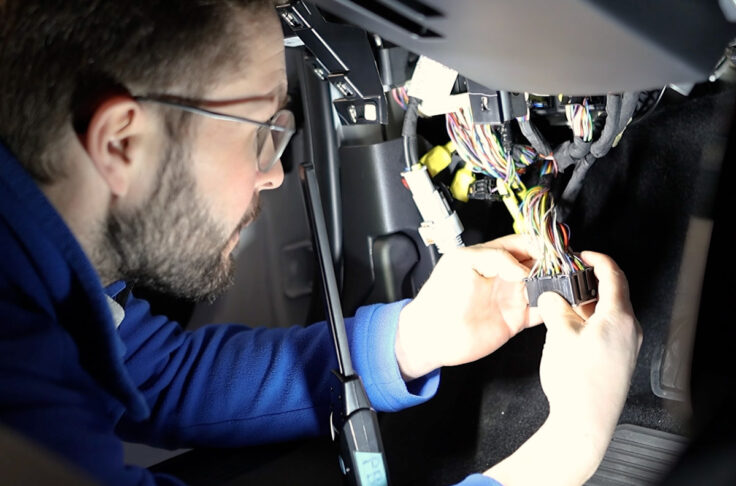From Ownership to Usership – Maximize Your Fleet’s Potential
Summary
Hans Krstian Aas, CEO and co-founder of imove, joined us for a webinar on how to maximize fleet potential by adding new revenue streams and using data to scale profitably. He provided examples of using data to find the most profitable moments to move fleet vehicles through different lifecycle stages. Bharath Devanathan, INVERS’s Chief Business Officer, overviewed the technology needed to acquire and use the data effectively and discussed the changes he’s observing in the shared mobility market.
Fleet operators are looking for ways to maximize fleet potential and find ways to scale effectively to be profitable. Some are searching for new ways to use underutilized vehicles, while others are looking to squeeze as much profit out of vehicles already in use. Below are three things that our webinar taught us about how successful operators are getting the most out of their fleet, and how their efforts are blurring the boundaries in shared mobility:
Shared mobility’s success is attracting many new players
We’re seeing an evolution in shared mobility, as traditional automotive players are starting to experiment with carsharing and car subscription. They are attracted not only by the growth that the space is experiencing, as shown in our recent report on car subscription for example, but by the desire to own more of the relationship with the vehicle end-user. Among OEMs, Toyota launched Kinto to offer car subscription (Flex), carsharing (Share), and long term rentals (One). Renault is using Mobilize to offer various mobility solutions, including carsharing. Meanwhile, traditional car rental players like Hertz and Europcar are also exploring carsharing services. Integrating these shared mobility services lets fleet operators keep their customers within their profitable ecosystem for vehicle repairs and maintenance. It also lets them get more use and profit out of fleet segments that may be sitting idle and underutilized.
At the same time, we’re also seeing non-automotive players dip their toes into the shared mobility pool. Property developers want to integrate carsharing in their buildings to reduce the need for city-mandated parking spaces. Mondofi is adding carsharing to its buildings, and also created a smart-building operating system for tenants and managers that includes station-based carsharing features. The sharing economy is also attracting the insurance industry; Swedish insurers Gjensidige for example saw many fleet owners self-insuring their cars and decided to launch Schysst, their own carsharing service, to get in on the action.
Data and analysis lead to more accurate depreciation estimates
Depreciation makes vehicles a difficult asset upon which to build a business. According to Hans Kristian, depreciation and financing cost can account for 60-70% of a car’s price. Typically, operators calculate depreciation based on three-year residual value estimates, which may simply be a percentage of the vehicle’s MSRP. Hans Kristian suggests that right data and analysis can give fleet operators a more accurate, real-time value of their cars. Some of the sources of data that imove uses include vehicle mileage, fleet financials, insurance history, used vehicle market values, and credit facilities.

The resulting analysis tells operators how to optimize their service, and when is the best time to sell their vehicles:
- keep a vehicle when the margins are good and there’s demand for it and the margins are good
- adjust a vehicle’s use and/or pricing to avoid losses
- sell the vehicle when the business case for doing so is better than keeping it in service
Being surprised by value depreciation should belong to the past. The quantity and quality of data now available to fleet operators allow them to be in greater control.
Churn data help optimize fleet utilization
Fleet utilization is very important in shared mobility; operators want as many vehicles as possible out on paid rentals. At the same time, the remaining vehicles should be ready and available for use. Imove suggests using churn data to optimize fleet utilization in car subscription, which often follows a seasonal cycle among customers with short term (monthly) commitments:

- During low churn periods, typically in the spring, there is an opportunity for real growth. This is the time of year where fleets should be putting a lot of emphasis on sourcing and scaling the fleet.
- Before summer vacations a lot of users tend to switch to large cars for big trips. Operators need to be ready by sourcing these types of cars into their fleet. At the same time, they should also be selling off smaller cars which get less use during summers.
- After summer vacations, a lot of cars are typically returned and churn increases. Operators should not plan large bulk purchases of cars during that time. Instead, they should be increasing marketing spend and ensure that cars can be pre-booked once available. This is also be a good time to sell cars that data shows are not popular.
Aiming for 90% fleet utilization means that enough cars will be earning revenue out on rentals to make operations financially viable. Meanwhile, 10% of cars will be immediately available for new clients, or existing ones who want to swap vehicles.
More from the webinar
Hans Kristian and Bharath also provided interesting real-life examples of data used to decrease vehicle abuse; did you know that red cars are more likely to be driven aggressively? They also outlined the technologies that can help maximize your fleet’s potential, and took interesting questions from the audience. The entire webinar recording is worth checking out, whether you have a fleet and are thinking of adding shared mobility services to your business model, or if you’re already in the shared mobility space and want to learn about scaling profitably.
Do you have questions about the telematics connectivity solutions mentioned in the webinar? Please contact our experts to learn how you can connect to our vehicle-agnostic system.


